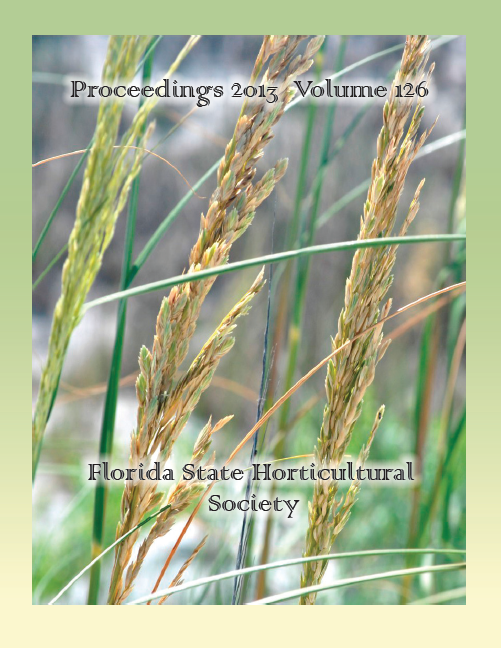Published 2013-12-01
Keywords
- CandidatusLiberibacter asiaticus,
- Citrussp.,
- citrus greening,
- diagnostic test,
- discriminant analysis
- ROC curves ...More
Abstract
One of the most prominent characteristics of huanglongbing (HLB or citrus greening)-affected citrus trees is the abundant starch accumulation in photosynthetic cells and all other remaining parenchyma cells of aerial parts. Under natural conditions, citrus leaves store very low levels of starch, and detectable amounts are only seen as a result of zinc deficiency or accidental girdling of branches. Therefore, leaf starch concentrations over a threshold level should indicate the presence of HLB. In this report, we detail both frequentist and Bayesian statistical approaches to predict HLB using starch levels in citrus leaves. Real-time PCR detection of the presumptive causing agent Candidatus Liberibacter asiaticus was used as a proxy for HLB status, but we also present a competing analysis that does not use PCR as a gold standard. Starch content was found to reliably predict the PCR results (the proxy for HLB presence) during the “warm season” (June through November), but not in the “cool season” (December through May). During the cool season, starch levels for HLB positive trees tend to be lower, and 43% of samples were incorrectly classified using linear discriminant analysis (LDA). In contrast, during the warm season, only 8% were misclassified. Further, assuming PCR possibly has error, the total probability of misclassification for HLB status could be controlled using an “uncertain” classification. Analysis of the biotic conditions surrounding HLB in terms of bacteria life cycle and the plant development provides insights into these patterns.

